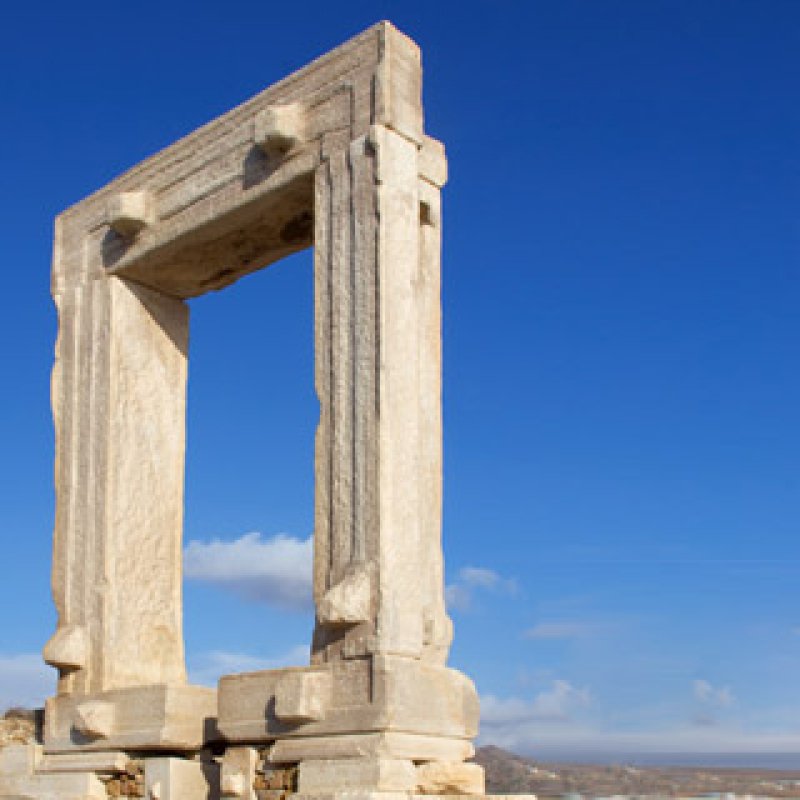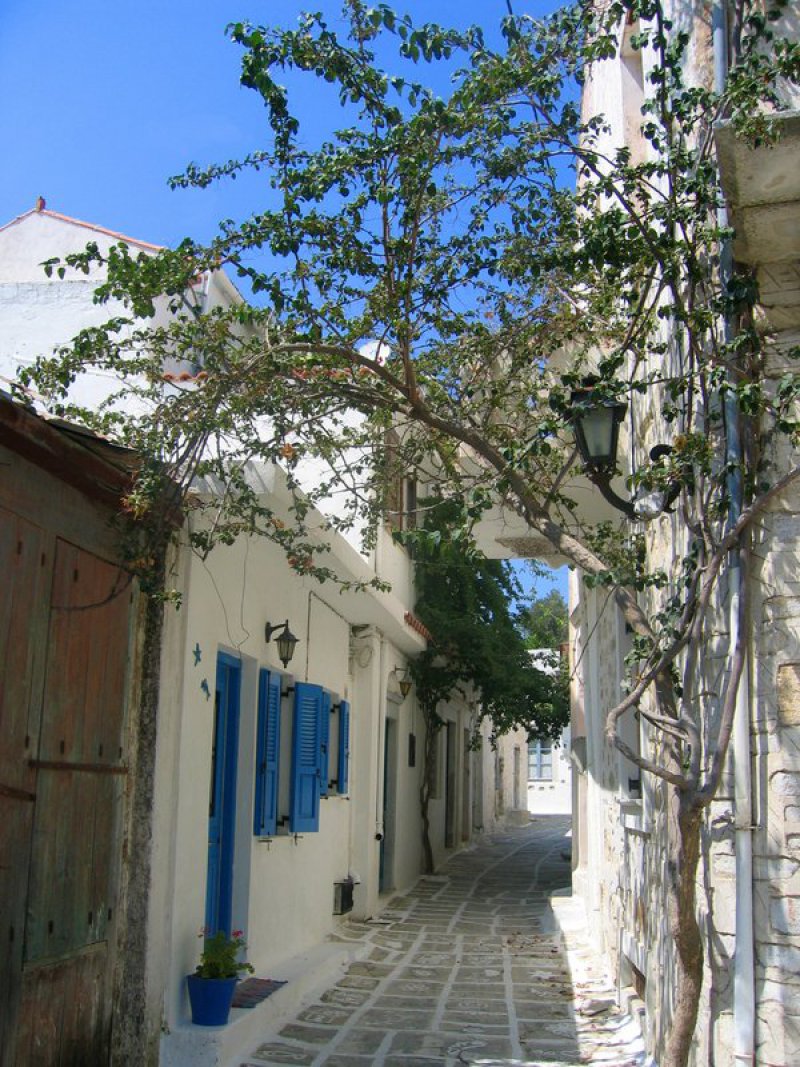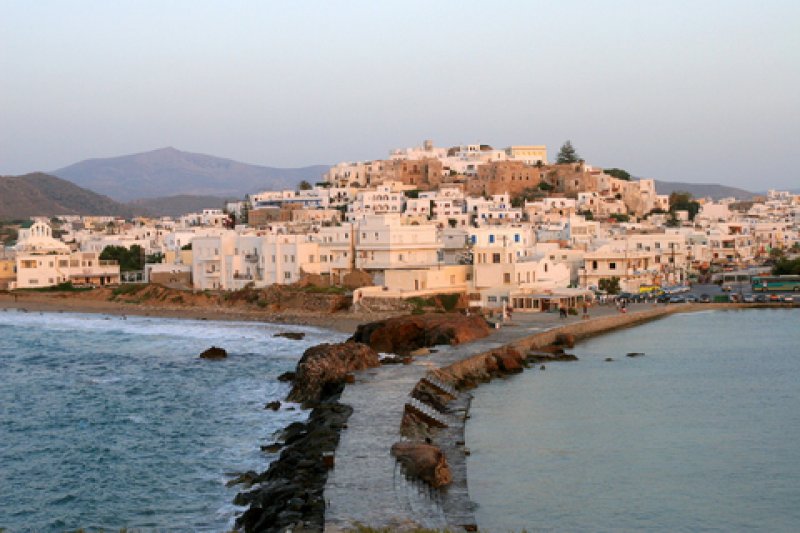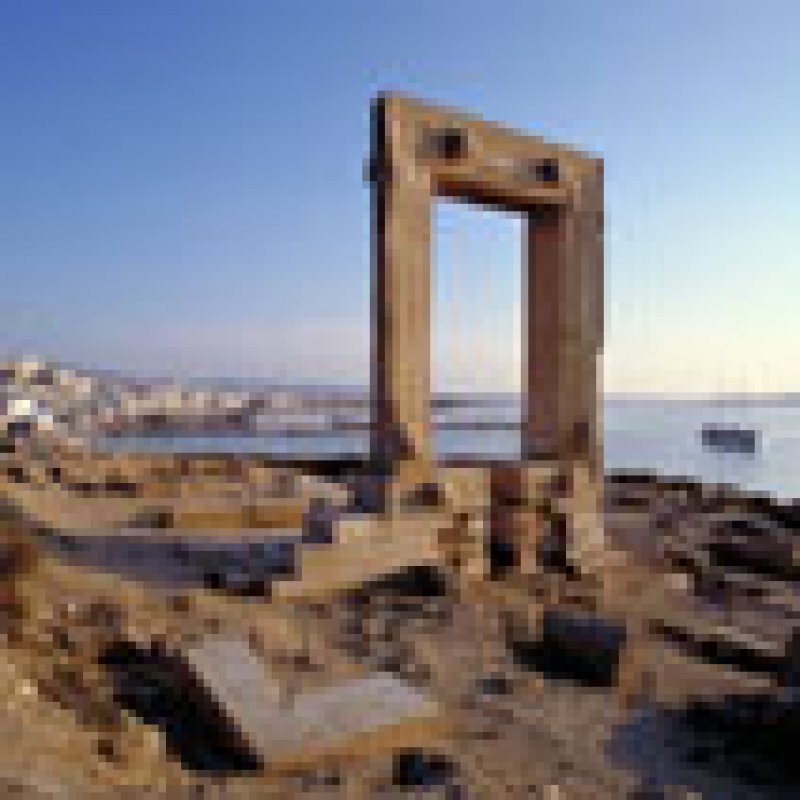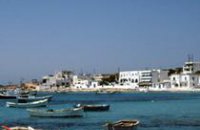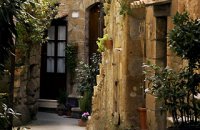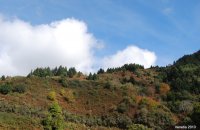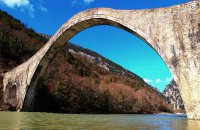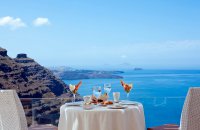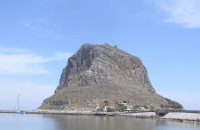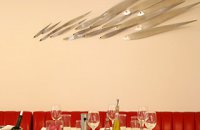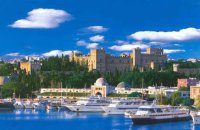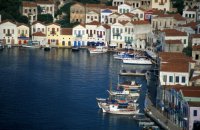To speak of its history, culture, customs, traditions, the people of Naxos themselves, its natural beauty, golden sands, awesome ruins, its towers and battlements…where dοes one begin? One can truly discern what writer Nikos Kazantzakis referred to as "a great sweetness."
The largest island of the Cycladic group was given a great gift by the Creator: its fertile valleys teeming with olive trees, fruit-bearing trees, vegetables, vineyards… virtually everything is available here in great abundance, so much so that the island is self-sufficient.
As strong as a fortress, Naxos rises out of the Aegean, and the majority of those who have enjoyed holidays here stress the fact that it is an ideal destination for families. Entering the Hora in Naxos is done in a rather grand way…passing by "Portara" (Gateway). On the islet just in front of the harbour, the so-called "Palatia", a huge marble gateway, rising imposingly, faces the island of Apollo, Delos.
Present day Hora is not lacking in charm and beauty either. High on a hill, it is adorned by its amazing castle-fortress, towers and embrasures, along with many residences built in the 14th and 15th centuries. A complex network of alleyways, roads and cobbled streets, stairways and doorways, roofed domes, fanlights, stately homes, coats of arms and balconies make it easy to get hopelessly lost and lead you, not surprisingly, to various cul de sacs.
There are countless routes one could take around the island. The longest seems to have been the one that connects Hora with Apollona, passing through the island’s interior and returning by the recently paved road from Aghia to Egkares and Hora.
The best spot for any wanderer is, naturally, the highest mountain in the Cyclades. Mt Zas (from Zeau-Dias, with a height of 1,004 metres), rising like a giant but also as an eternal guard to watch over the fertile valley of Tragaias. The first crossroads is at Chalki where the Tower of Grazias rises by the roadside, and the ‘little Mystras’ of Tragaias scatters its beautiful old churches around the surrounding area. Filoti, the largest village and one of the most picturesque, is 2 km further up. It is a jewel of white lace against the brown-grey slope of the mountain, with the rich Tragaias valley resting like a green necklace at its feet. From here you can make your way to the ‘Spylaio of Zas’ (the cave of Zas), walk down to the Tower of Cheimarrou, or continue your journey to Apeirantho.
To visit Naxos and not see Apeirantho, would be to neglect perhaps the most important part of the island. It os said that the village was founded by the Cretans in the 10th century AD, and in its little lanes you’ll certainly hear Cretan serenades in the couplet style and the amazing dialect of the locals. This is truly one of the loveliest villages in all the Cyclades, with narrow marble cobbled lanes, steep inclines, Venetian towers, domes, a variety of old, stone-built houses, delightful balconies, small picturesque squares with coffee houses lost in time, and inhabitants who maintain their own customs and traditions, continuing the great spiritual and cultural tradition of Apeirantho.
Naxos gives the impression of being endless; when you visit the beaches of Aghia Anna and Plaka or the tiny beaches of Vigla and Pyrgaki, the atmosphere of a summer resort brings you back to the present day and offers an amazing sense of holidays that are carefree and you wish would never end on this beautiful Cycladic island.
Naxos can be reached by ferry boat, by the newer and faster passenger ferries, or by air. There are frequent departures, so you won’t encounter any difficulty in getting there (unless you’d like to take your car, in which case you should make arrangements well in advance for both the outbound and return trip).
Distances on Naxos are by no means negligible. Apollonas is 48 km from Hora if you take the inland road towards the eastern side of the island, and 36 km if you follow the newer coastal road running along the island’s western side.
Distances from Hora to the following places are: Aghia Anna, 6 km; Apeiranthos, 26 km; Egkares, 7 km; Koronida, 37 km; Melanes, 8 km; Sagkri, 11 km; Filoti, 19 km; Chalki, 16 km; Tower of Cheimarrou, 32 km (6.5 km of which is along a dirt road).
Accommodation
Quite apart from the large number of hotels on the island, there are hundreds of rooms to rent, as well as well-run camping sites that resemble complete little communities (some even boast a swimming pool!).
Below are listed some of these: Zeugoli Tower (Hora castle) 22850-25200, Apollon (Hora) 22850-25201, Villa Medusa (Plaka) 22850-75555, Adonis (Apollonas) 22850-67060, Naxos Palace Hotel (Stelida) 22850 29133 - 4 & 23830, Kavos Villas and Apartments (Agios Prokopios) 22850 23355, 24142, Dimitra Studios (Kastraki Beach) 22850-22086, 22850-75404 .
Food
Welcome to the island of plenty! Naxos is a food lovers’ paradise, and no matter how long you stay, there’s always a new gastronomic pleasure to give in to. Briefly then, I’ll mention what I was able to discover and taste while I was there.
For good fish, I went to "Paradiso" in Maranga, but also to the exceptional "Gorgona" at Aghia Anna, which also has excellent ready cooked dishes too.
At Apeirantho, "Lefteri" stands out as a spotlessly clean, traditional style taverna. The "Kastani" grill house at Filoti is excellent. For local ingredients and recipes I visited the "Klouvatou" taverna in Kinidaro.
In Hora, there’s a fine restaurant called "Klimataria", and for fish I’d recommend "Karnagio" and "Psistaria tis Popis" for grilled meat. Everyone claims that the grilled meat at Potamia has a unique taste.
For good fowl, hare and goat try "Dekes" in Melanes or "Magkani" at Tripodes. In my opinion, Naxos’ best cheese is the piquant "Arseniko".
Area code 22850
Police, Hora 22100
Health Centre, Hora 23333
Port Authority 22300
Town Hall, Hora 22717














































